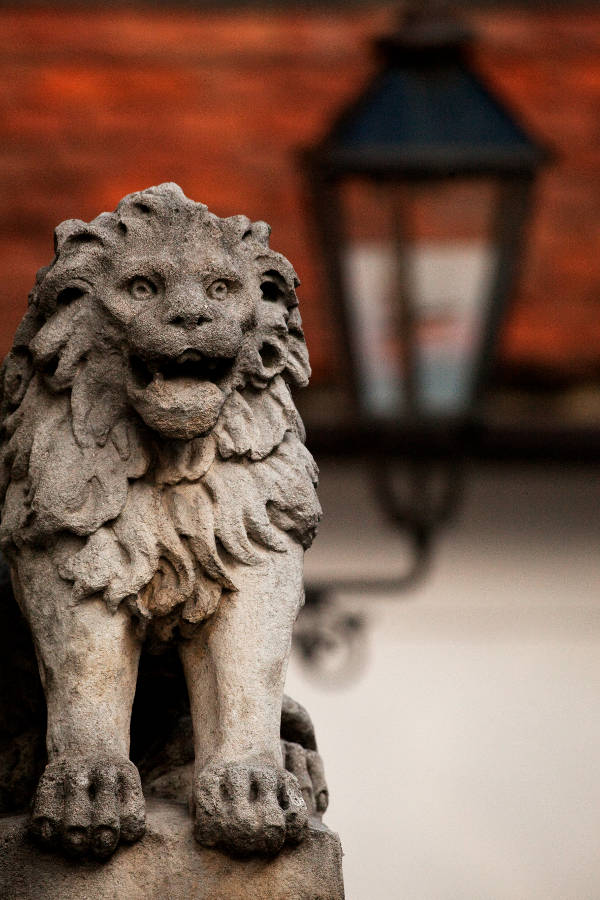The Stone Gate – Zagreb’s Pensieve
For those who don’t know, this quote from the introduction is from one of my favorite magicians, professor Albus Dumbledore, Headmaster of Hogwarts school of Witchcraft and Wizardry. Albus was Harry Potter’s favorite person in the world because of his words of wisdom, and I am sure that the name of the little magician came up somewhere in your surroundings. The reason why Dumbledore was so wise was because he never gave up on the things he strongly believed in. And his modus operandi was to thoroughly examine each situation, with a clear mind and a fearless heart.
Dumbledore’s Pensieve helped him during some hard times. It was his sanctuary, a place to reminiscence and rest, but most of all, to ease his burdened mind when in doubt. I myself often think about how useful it would be if Pensieve wasn't just a made-up object, but a real place to focus and think about your next steps. And you know what? Zagreb is blessed with that kind of place, and it is called The Stone Gate. The story goes something like this.

Image credit: Zagreb Tourist Board, Marko Vrdoljak
The Stone Gate is one of the best-preserved monuments of our capital. The history of the gate itself is almost as monumental as the gate's name. Even floods, earthquakes, and fires couldn't stop it from standing proudly and being a gateway to Zagreb’s Upper Town. Why do I call it a blessing? Well, even if I’m not that much religious, I respect other people's beliefs, and there is one anecdote that persuaded many of them into the existence of something bigger than themselves. The last big fire from 1731 burnt down the apartment situated inside the gate. Only one thing survived and that was the painting of the Virgin Mary, which, somehow, remained intact. And that, basically my dear reader, is the story about how Zagreb got its sanctuary.

Image credit: Zagreb Tourist Board, Marko Vrdoljak
People come here every day to pray for peace, love, happiness, and health. Some of them just silently contemplate staring at the metal and marble plaques engraved with personal thanks for answering to prayers. Passing through the Stone Gate always fills me with a tremendous feeling of respect, respect for this magnificent architectural atavism of Middle ages, respect for the human possibility of relating to other people's suffering and joy, and most of all, respect for all the intertwined lives whose nodal point happens to be exactly here – where people, just like our Albus from the beginning of the story, focus on finding links and patterns.

Image credit: Zagreb Tourist Board, Marko Vrdoljak
That respect always leaves me in some blissful peace even though the mere history of the Stone Gate was everything but peaceful. Its first ‘official’ entrance in Zagreb’s history was in 1357 when the gate was mentioned for the first time as a part of Gradec fort. Many of you don’t know it, but the capital wasn't always unified, and it is, in fact, a lovely combination of two once sworn enemies: the rich and noble Kaptol and the middle-class Gradec.
The fort was used as a defence against Turkish attacks but as well as against other invaders and did that job pretty well, like a lion defending its cub. Truth be told, there are some pretty fascinating lion sculptures just in front of the Stone Gate chapel which reminds me of this comparison. The gate was also the only open passage into the city while the white death commonly known as the plague was taking its toll on the capital in the 17th century. The fort, even though not as strong as a doctor, still did its part in saving some of the sick in the time of need.

Image credit: Zagreb Tourist Board, Marko Vrdoljak
The city government wanted to tear down the gate due to its appearance that didn’t fit into the urban development of Zagreb, but a group of elitist intellectuals, who gathered under the name 'Brethren of the Croatian Dragon', recognized the value of the Stone Gate and cherished it as much as Albus cherished his Pensieve. So, they arranged that the gate continues to proudly stand.
The gate is still there, resisting the passing of time and welcoming everyone in need for some luck, a new chance, or just a peace of mind. And they are lighting with the light of thousand candles, lit by people who never give up hope.
Header image credit: Zagreb Tourist Board, Marko Vrdoljak
Author: Lana Suša
